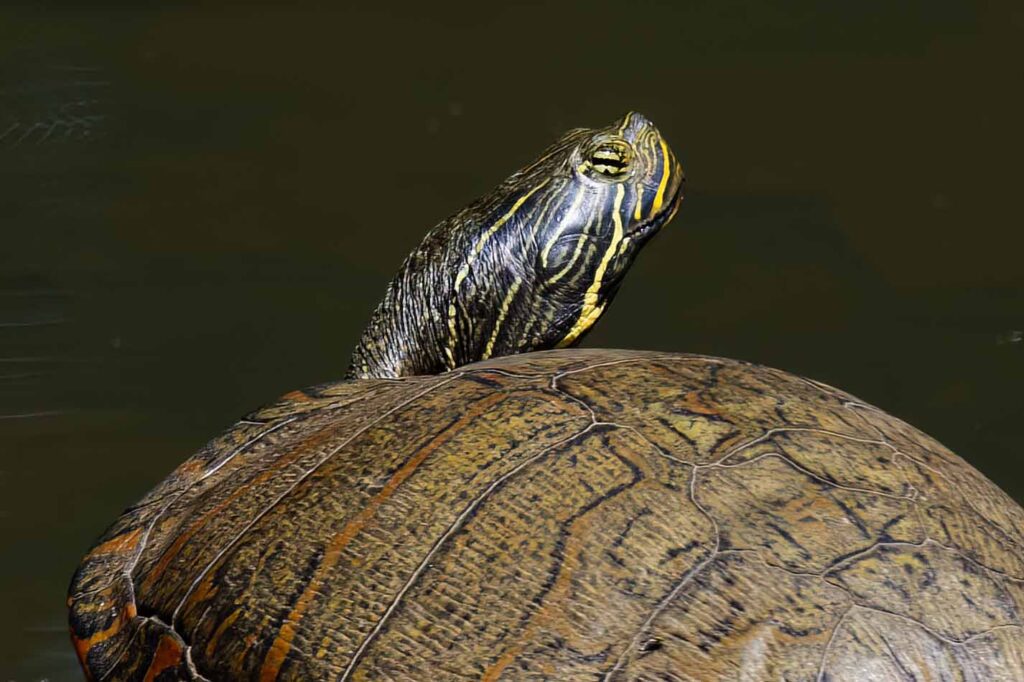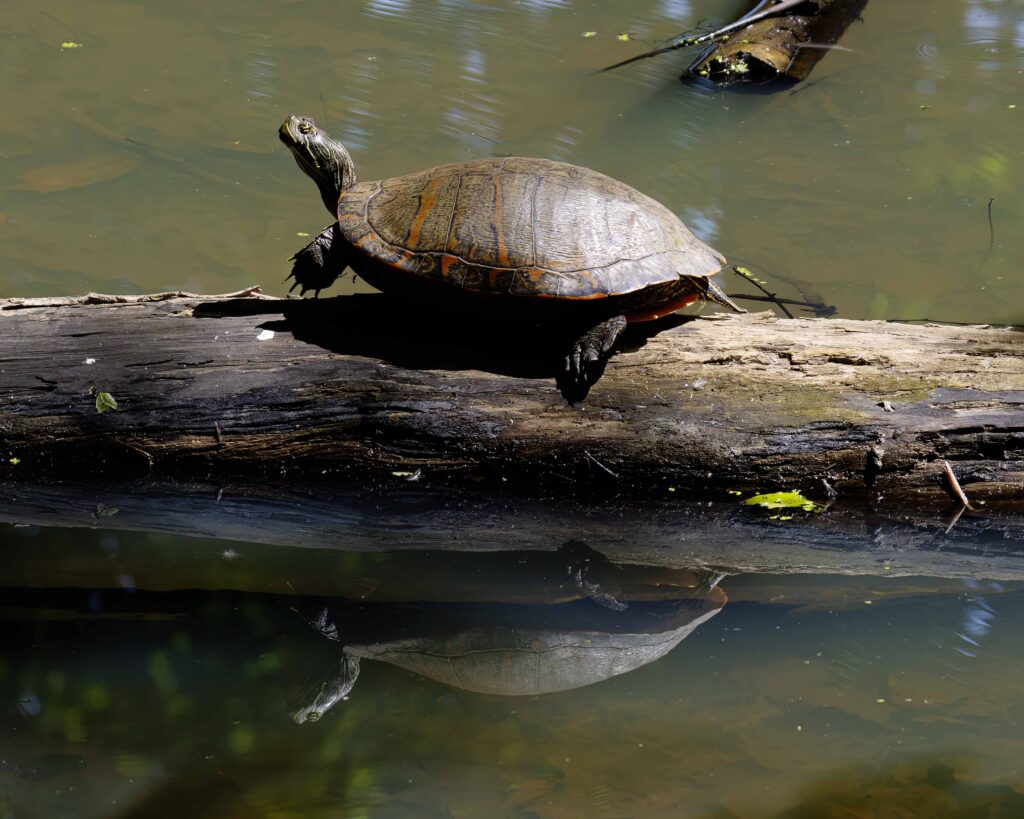Your cart is currently empty!
Eric Stuyck
7/29/2025
I had to take a drive to Stering, Virginia this morning and decided to find a park along the way that I’ve never been to and look for wildlife to photograph. ChatGPT suggested Bles Park in Ashton and Google Maps showed me the way.
At first, nothing spectacular or unusual (until I got home and looked at them on the computer and got that familar feeling of the awe of Creation.)
Subject one: a dragonfly casting his shadow on a blade of grass. Specifically, a Blue Dasher Dragonfly. (Remember, I’m looking all of these up – I’m no entomologist.) I zoomed in for your viewing pleasure, but I liked the negative space and might even make this my “Insects” entry in the fair this year.
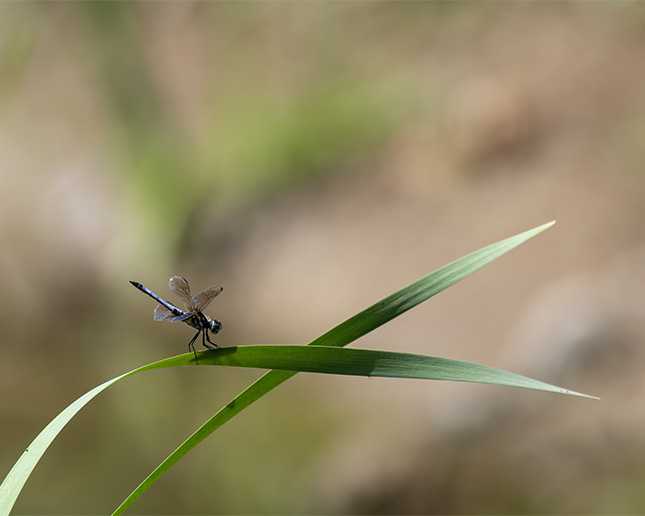
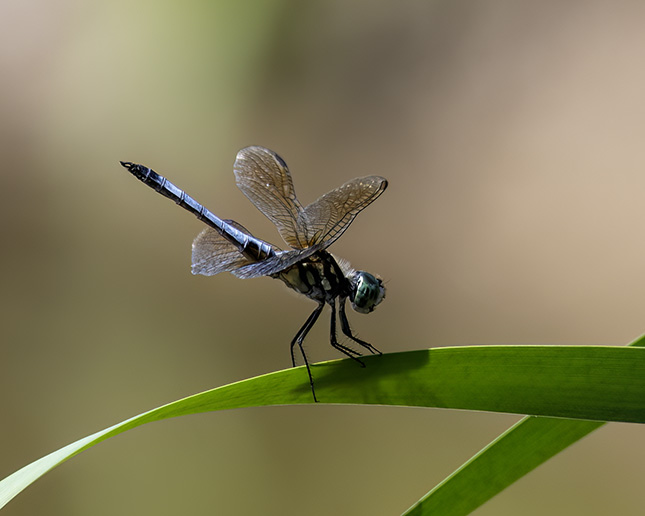
Subject two: an Eastern Comma Butterfly. Not to be confused with its cousin, the Eastern Semi-Colon Butterfly which can be identified by its extra spot. He was casting his shadow down the trunk of the tree on which he was spotlighted thanks to an opening through the leaves.
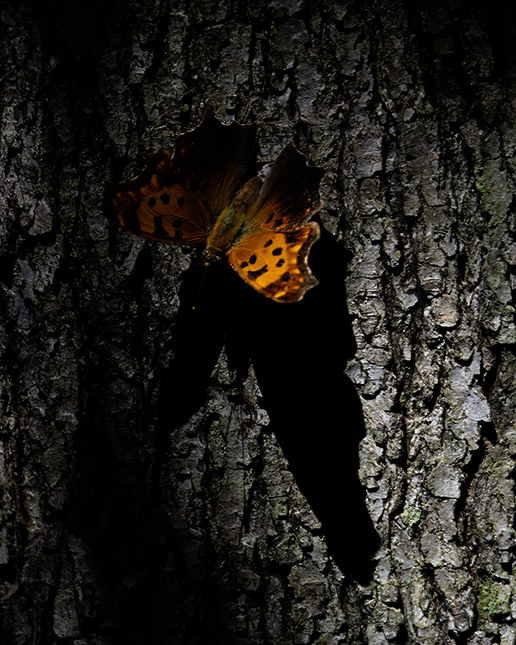
Third subject: A Great Blue Heron on the other side of the pond making for a photo with some non-negative negative space. He was atop what apparently held a nesting box, now gone, and still has the squirrel deterent attached.
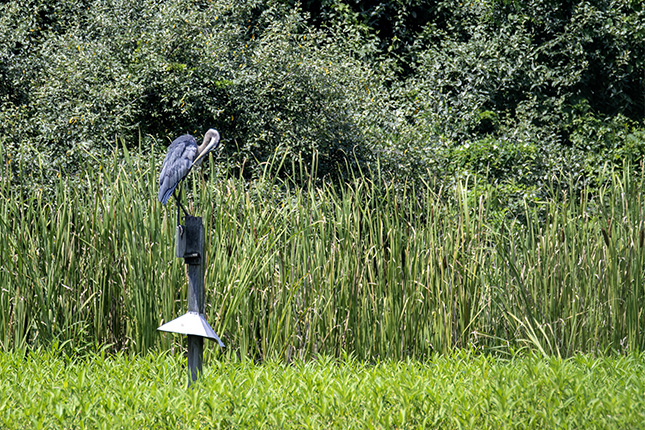
So far, just OK.
But as I broke out of the woods and started across the sports field between me and the parking lot, I was unexpectedly Bles-sed when I looked up to enjoy a fly-by by subject four: a Bald Eagle.
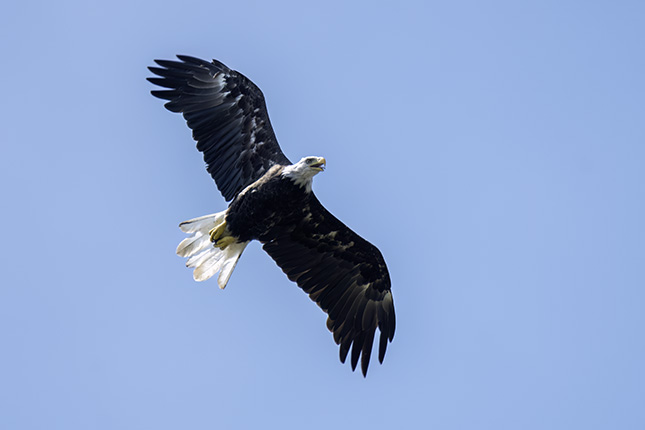
What I thought was ending up as a mediocre visit, turned into something special. We have eagles around here, but encounters close enough to photograph are few and far between unless you travel two hours to Conowingo Dam and wait, sometimes hours, to maybe catch an opportunity.
PS: Calendar delivery expected Friday!
7/10/2025
I know, not exactly bi-weekly, is it? Not yet, I’m still getting into the swing of things. I promise to do better, but I think you’ll find this interesting:
Tuesday, I took advantage of a sunny morning and (slightly) cooler early morning temperatures to take the short drive to Harpers Ferry in search of a print-worthy photo of a Green Heron for the 2026 calendar. The hour and 45-minute stay was full of wildlife encounters, the first of which is a great example of the magnificence and complexity of nature.
I’ll confess that I had to depend on Google Lens to ID this butterfly because I know little about them. And in the process, I even learned a new phrase. Pictured is the Red-spotted Purple Admiral that alighted on the footpath in front of me along the Shenandoah Canal.
What I didn’t know was that the purple variety of the Red-spotted Admiral looks very much like a Pipevine Swallowtail Butterfly, making it a “Batesian mimic” – a benign species that strongly resembles a dangerous one in order to discourage predators. The Pipevine Swallowtail is poisonous to predators due to the acid that they store as larvae from eating the Aristolochia plant. The poisoning occurs when they are consumed, and the surviving predators have learned their lesson to steer clear of them. Which benefits the masquerading Red-spotted Admirals.
What I did suspect, upon seeing the bluish wings of the insect, was that the blue was probably not a result of pigmentation, but of structural coloration. There is very little blue pigmentation in nature (for example, even in Bluebirds) and a quick lookup confirmed that this is the case in the Red-spotted Admiral as well.
The shimmering blue is caused by the cellular structure of, in this case, the tiny scales that cover the wings. The intricate structure causes the light to bounce around, being reflected and refracted, turning it into the wavelength of the emerging light, a hue of blue. Not only that, but this particular structure does not reflect the blue wavelength evenly 360 degrees around the creature, causing it to appear iridescent, making it seem to shimmer as the angle changes.
In this first photo, a light blue can be seen, although at that angle, faintly, on the wings when light is shining directly on them. It is a bit more visible in the second photo.
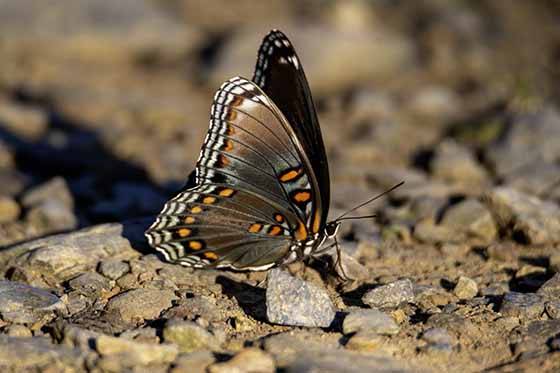
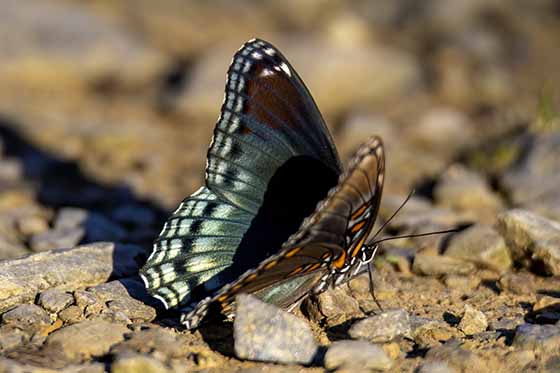
As you can see in the next photo, in this particular case, the blue is more easily seen with the light coming from beyond the butterfly and shining on it at a particular angle when its wings are spread flat.
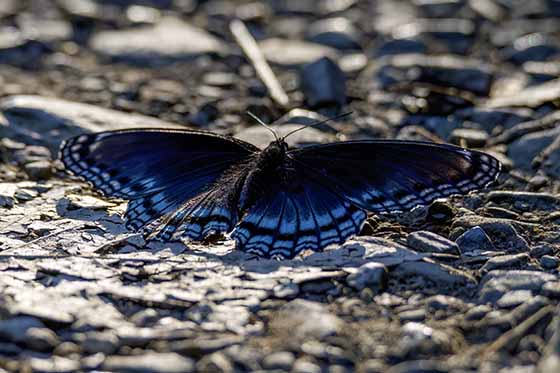
The next photo shows a backlit wing. On the lower section of the wing where the light does not fully penetrate the wing and there is some reflection from the light on this side, it is blue. However, where the sun penetrates the upper part of the wing, we see the true color of the wing since the light coming through is stronger than any light reflecting off the surface of our side of the wing. If you were to crush the wings, the structure would be rendered nonfunctional and this dark brown color is how they would appear.
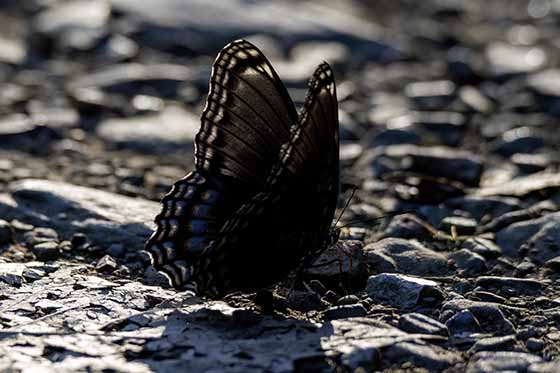
There is only one butterfly that is has partially blue wings due to chemical pigments – the Nessaea Butterfly. Besides that, the only other animals that I could come up with that have blue pigmentation are the Blue Poison Dart Frog and two fish, the Mandarin Dragonet (Dragonfish) and the Blue Damselfish.
It is utterly amazing to think that blue in nature is almost completely caused, not by pigment, but is a result of physics! Kind of looks like it was designed that way by an engineer, doesn’t it?
And who’da thought that Bluebirds aren’t really blue?
6/6/2025
A couple of days ago, I managed to persuade myself that I needed to take a break from editing photos and pick up my camera, which I hadn’t done for several weeks, and headed off, on foot, to the C&O Canal National Historical Park, five minutes away. Well, ten if you include stopping at my neighbor’s fence and petting my two hiking partners, Lucy, the Golden-doodle and Ollie, the Aussie. (Check out their photos in the studio dog album.) They each got a treat for their troubles and a promise to return later for a walk.
I was particularly interested in watching for Wood Duck families and Green Herons in the canal, but I wanted to take my normal loop in the park watching for anything else interesting. I hadn’t seen any Wood Ducks in the usual place yet this year, so I was hoping that they hadn’t skipped out on us.
No herons, but there was a Wood Duck family. As usual, I couldn’t get very close as they swam away from me, and for good cause. I was no danger, but the young family normally has maybe eight ducklings. As they grow, their number dwindles, undoubtedly due to predators – hawks and snapping turtles come to mind – until later in their development when you might see just a couple left with the mother, if that. I tried to stay ahead of them and catch them as they passed through what light patches could find their way unobstructed through holes in the tree cover.
Alas, I couldn’t do my loop. I tried my usual path to the footpaths along the Potomac, but encountered mud left from the recent flooding (which I was hoping would have dried by then). Moving off the muddy path through the trees, I encountered another bi-product of the recent flooding, mosquitoes, hordes of them! Hatched in the standing waters left just inland, the little buggers smelled blood and came after it. I retreated and retraced my steps along the canal.
What I spotted in the canal on the return trip was a turtle that didn’t mind sticking around for a photoshoot. I tried to get as low as I could without having the brush at the side of the towpath interfere, shooting around it from behind the turtle as he twisted his head back to keep an eye out, and through it from another vantage point where nature had graciously accommodated me.
My photos show a Northern Red-bellied Cooter (named for sure by a southern Appalachian hick and sounding like something intended as an insult to Yankees akin to “Yellow-bellied Sapsucker”). Northern Red-bellied Cooters are classified as endangered, but I have seen them in this specific part of the canal before. They can be easily confused with Painted Turtles, but upon closer inspection have reddish-orange bars marking their shells.
He was a fair size. I’m going to guess an 8–10” long shell. According to Wikipedia, the males don’t grow much longer than 11-1/2”, but the females can get up to 16” and are the largest recorded basking turtles in the Chesapeake Bay area.
It’s always nice spotting wildlife that is endangered, threatened or otherwise uncommonly seen and finding at least that this one seems to be doing well. Even nicer when you see them again.
